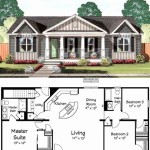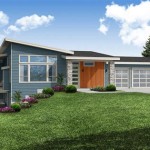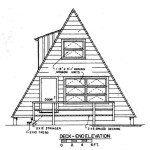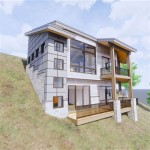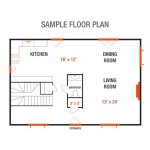House addition plans serve as blueprints for expanding or modifying existing residential structures. They provide detailed instructions, specifications, and design elements necessary to construct new additions or renovate existing spaces within a home. These plans allow homeowners to increase living space, enhance functionality, or accommodate changing family needs.
Whether it’s adding a new bedroom, expanding a kitchen, or creating a home office, house addition plans play a vital role in ensuring a successful and seamless expansion project. They facilitate communication between homeowners, architects, and contractors, ensuring that all parties are on the same page regarding the design, materials, and construction methods.
In the following sections, we delve deeper into the advantages, considerations, and key elements involved in creating and implementing house addition plans, helping homeowners navigate the process of expanding their living space efficiently and effectively.
When considering a house addition, it’s essential to address several key points to ensure a successful project:
- Define Scope and Goals
- Hire a Qualified Architect
- Obtain Building Permits
- Set a Realistic Budget
- Consider Structural Impact
- Plan for Utility Extensions
- Address Lighting and Ventilation
- Select Finishes and Materials
- Monitor Construction Progress
By carefully considering these aspects, homeowners can increase the likelihood of a smooth and satisfactory house addition project that meets their needs and enhances their living space.
Define Scope and Goals
Clearly defining the scope and goals of a house addition project is crucial for ensuring a successful outcome. This involves determining the specific reasons for the addition, as well as the desired outcomes in terms of space, functionality, and aesthetics. Here are some key considerations:
- Identify Needs and Requirements: Determine the specific needs and requirements that necessitate the addition. Consider factors such as increased living space, additional bedrooms or bathrooms, or the need for a dedicated home office or gym.
- Establish Functional Objectives: Define the specific functions that the addition should fulfill. This includes considering how the new space will be used, the flow of traffic, and the relationship between the addition and the existing home.
- Consider Aesthetic Preferences: Establish the desired architectural style and aesthetic preferences for the addition. Determine how the new space should complement or contrast with the existing home, and consider factors such as exterior finishes, window styles, and rooflines.
- Set Realistic Expectations: Define realistic expectations for the size, scope, and budget of the addition. Consider the limitations of the existing structure, zoning regulations, and financial constraints.
By clearly defining the scope and goals of the house addition project, homeowners can provide a solid foundation for the design and construction process, ensuring that the final outcome meets their specific needs and aspirations.
Hire a Qualified Architect
Engaging the services of a qualified architect is essential for a successful house addition project. An experienced architect brings expertise in design, construction, and project management, ensuring that the addition seamlessly integrates with the existing home while meeting the homeowner’s functional and aesthetic goals.
- Expertise in Design: Architects possess the training and experience to translate the homeowner’s vision into a functional and aesthetically pleasing design. They consider factors such as space planning, natural light, and the overall flow of the home.
- Understanding of Building Codes: Architects are well-versed in building codes and regulations, ensuring that the addition complies with all applicable requirements. This helps avoid costly delays or rework during the construction process.
- Construction Oversight: Architects can provide oversight during the construction phase, ensuring that the addition is built according to the plans and specifications. They act as a liaison between the homeowner and the contractor, addressing any issues that may arise.
- Long-Term Value: A well-designed addition can significantly enhance the value of a home. Architects consider factors such as curb appeal, energy efficiency, and functionality, ensuring that the addition adds value to the property in the long term.
Hiring a qualified architect may involve additional costs, but it is an investment that can save time, money, and stress in the long run. A well-designed and executed addition can enhance the functionality, aesthetics, and overall value of the home.
Obtain Building Permits
Obtaining building permits is a crucial step in any house addition project. Building permits ensure that the addition complies with local building codes and regulations, ensuring the safety and structural integrity of the new construction.
Process for Obtaining Permits:
The process for obtaining building permits varies depending on the municipality. Generally, it involves submitting a set of plans and specifications to the local building department for review and approval. The plans must include detailed drawings, structural calculations, and a description of the materials to be used.
Required Documentation:
The building department will review the plans to ensure that they meet all applicable codes and regulations. They may require additional documentation, such as a site plan, energy calculations, or a geotechnical report. Once the plans are approved, the homeowner will be issued a building permit.
Fees and Inspections:
Building permits typically come with associated fees. The fees may vary depending on the size and complexity of the addition. The building department will also conduct inspections throughout the construction process to ensure that the work is being done according to the approved plans.
Consequences of Non-Compliance:
Failure to obtain the necessary building permits can result in fines, stop-work orders, and even legal action. Unpermitted additions may also be unsafe and may not be covered by insurance in the event of damage or disaster.
Set a Realistic Budget
Establishing a realistic budget is crucial for any house addition project. Failing to do so can lead to financial strain, delays, and even project abandonment. Here are some key considerations for setting a realistic budget:
- Define Scope and Goals:
Clearly define the scope and goals of the addition. This includes determining the size, complexity, and specific features of the new space. A well-defined scope will help you estimate the project’s cost more accurately. - Research and Estimate Costs:
Research and estimate the costs of materials, labor, and permits. Consider factors such as the type of materials used, the complexity of the design, and the local labor market. Obtain quotes from multiple contractors to compare costs and ensure you are getting a fair price. - Include Contingency Fund:
Set aside a contingency fund to cover unexpected expenses, such as unforeseen construction issues or material price fluctuations. A contingency fund of 10-15% of the total budget is generally recommended. - Consider Long-Term Costs:
In addition to the initial construction costs, consider the long-term costs associated with the addition, such as increased property taxes, insurance premiums, and maintenance expenses. Factor these costs into your budget to ensure you can afford the ongoing expenses.
Setting a realistic budget will help ensure that your house addition project is completed on time, within budget, and without financial stress. It will also allow you to make informed decisions about the scope and features of the addition, ensuring that it aligns with your financial capabilities.
Consider Structural Impact
Assessing the structural impact of a house addition is crucial to ensure the safety and integrity of the existing structure. Here are some key considerations:
- Foundation and Load-Bearing Capacity:
The addition should be designed to minimize the load on the existing foundation and load-bearing walls. An engineer may need to evaluate the foundation’s capacity to support the additional weight. - Framing and Reinforcement:
The framing of the addition should be properly connected to the existing structure to ensure stability. Additional reinforcement may be required to strengthen the connection between the old and new framing. - Roof Structure:
The addition may impact the roof structure, requiring modifications or reinforcement to support the new roof load and ensure proper drainage. - Utilities and Mechanical Systems:
The addition may affect the existing utilities and mechanical systems, such as plumbing, electrical, and HVAC. Careful planning is necessary to ensure that these systems can be extended or modified to accommodate the new space.
Addressing the structural impact of a house addition requires careful planning and engineering expertise. Failure to properly consider these factors can compromise the stability and safety of the entire structure.
Plan for Utility Extensions
Expanding a home through an addition requires careful planning for extending utilities to the new space. This involves ensuring that the existing utility systems can accommodate the increased demand and that the new utilities are installed safely and efficiently.
- Electrical:
The electrical system may need to be upgraded to handle the additional electrical load of the new space. This may involve installing new circuits, outlets, and switches, as well as upgrading the electrical panel if necessary. - Plumbing:
The plumbing system will need to be extended to provide water supply and drainage for the new space. This may involve installing new pipes, fixtures, and drains, as well as connecting to the existing water and sewer lines. - HVAC:
The HVAC system may need to be extended to provide heating, cooling, and ventilation to the new space. This may involve installing new ducts, vents, and equipment, as well as connecting to the existing HVAC system. - Gas:
If the addition includes gas appliances, such as a stove or fireplace, the gas line will need to be extended to the new space. This should be done by a qualified gas fitter to ensure safety and compliance with regulations.
Properly planning for utility extensions is essential to ensure that the new addition has access to the necessary utilities and that these utilities are installed safely and efficiently. Failing to adequately plan for utility extensions can lead to costly delays, inefficiencies, and potential safety hazards.
Address Lighting and Ventilation
Natural Lighting:
Maximize natural lighting in the addition by incorporating windows, skylights, and glass doors. Natural light not only reduces energy consumption but also creates a more inviting and comfortable living space. Consider the orientation of the addition and the placement of windows to optimize daylighting.
Artificial Lighting:
Plan for a combination of ambient, task, and accent lighting to create a well-lit and functional space. Ambient lighting provides general illumination, while task lighting focuses on specific areas, such as kitchen countertops or reading nooks. Accent lighting highlights architectural features or creates a desired ambiance.
Ventilation:
Proper ventilation is crucial for maintaining a healthy and comfortable indoor environment. Incorporate windows, vents, and fans to ensure adequate airflow and prevent moisture buildup. Consider cross-ventilation by placing windows on opposite walls to promote natural air circulation.
Mechanical Ventilation:
In areas where natural ventilation is insufficient, mechanical ventilation systems may be necessary. These systems use fans or ducts to circulate air and remove pollutants, ensuring a healthy indoor air quality.
Addressing lighting and ventilation in house addition plans is essential for creating a space that is both comfortable and energy-efficient. By carefully considering these factors, homeowners can optimize the use of natural light, create a well-lit and functional space, and ensure proper ventilation for a healthy indoor environment.
Select Finishes and Materials
Selecting the right finishes and materials for a house addition is crucial for achieving the desired aesthetic, functionality, and durability. Here are some key considerations:
Flooring:
Choose flooring materials that complement the existing flooring or create a distinct look in the new space. Consider factors such as durability, ease of maintenance, and style. Hardwood, laminate, tile, and carpet are popular options, each with its own advantages and disadvantages.
Wall Finishes:
Wall finishes can significantly impact the ambiance of the addition. Paint, wallpaper, decorative moldings, and wall paneling are common choices. Consider the existing wall finishes and choose options that create a cohesive flow throughout the home.
Countertops:
Countertops in the kitchen and bathrooms should be selected based on durability, functionality, and aesthetic appeal. Popular materials include granite, quartz, laminate, and butcher block. Consider the color, pattern, and thickness of the countertop to complement the cabinetry and overall design.
Cabinets:
Cabinets provide storage and functionality in kitchens, bathrooms, and other areas of the addition. Choose cabinet styles, finishes, and hardware that complement the overall design and provide ample storage space. Consider the height, depth, and configuration of the cabinets to maximize storage capacity and accessibility.
Selecting the right finishes and materials for a house addition requires careful planning and consideration. By taking the time to evaluate the available options and make informed choices, homeowners can create a functional, beautiful, and durable addition that seamlessly integrates with the existing home.
Monitor Construction Progress
Regularly monitoring the construction progress of a house addition is essential to ensure that the project is completed on time, within budget, and according to the plans and specifications. This involves conducting site visits, reviewing progress reports, and communicating with the contractor to address any issues or changes that may arise.
Site Visits:
Regular site visits allow homeowners to visually inspect the progress of the addition and identify any potential issues early on. During site visits, homeowners should pay attention to the quality of materials used, the workmanship of the contractors, and the overall adherence to the plans. Any concerns or deviations from the plans should be promptly communicated to the contractor for resolution.
Progress Reports:
Contractors typically provide regular progress reports to homeowners, detailing the work completed, materials used, and any challenges encountered. These reports help homeowners stay informed about the project’s progress and identify any potential delays or issues that may require attention.
Communication with Contractor:
Open and regular communication with the contractor is crucial for effective monitoring of construction progress. Homeowners should feel comfortable discussing any concerns or questions with the contractor and should promptly address any issues that arise. Clear communication helps prevent misunderstandings, delays, and disputes during the construction process.
By actively monitoring the construction progress of their house addition, homeowners can proactively address any issues or changes, ensuring that the project is completed to their satisfaction and in accordance with the agreed-upon plans and specifications.










Related Posts




